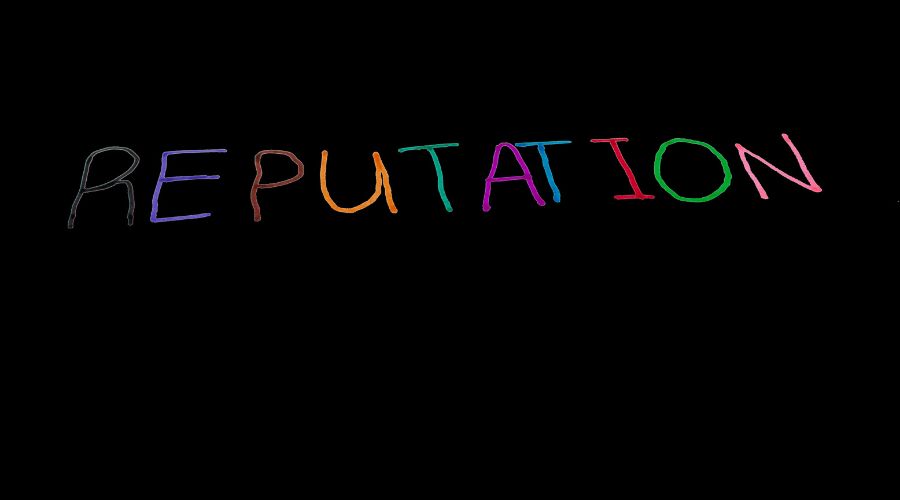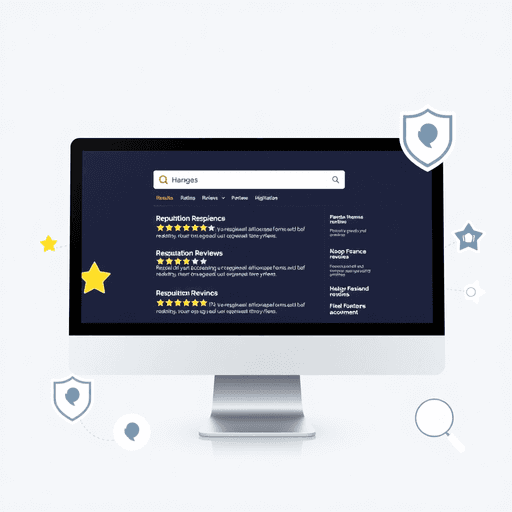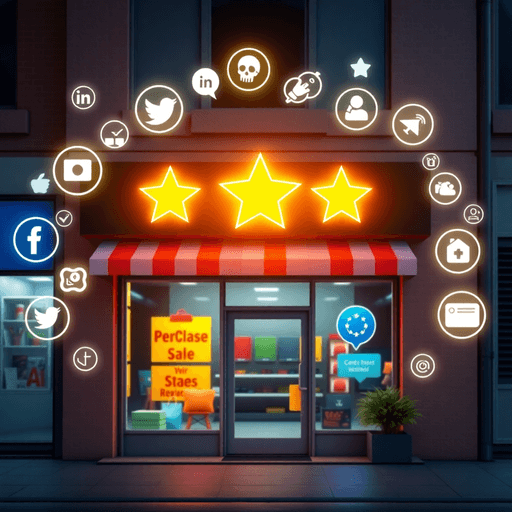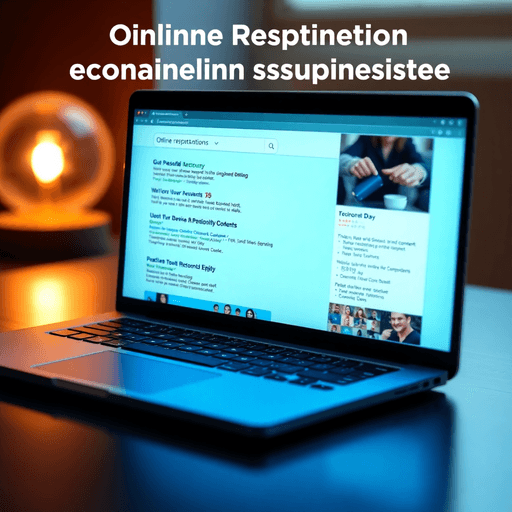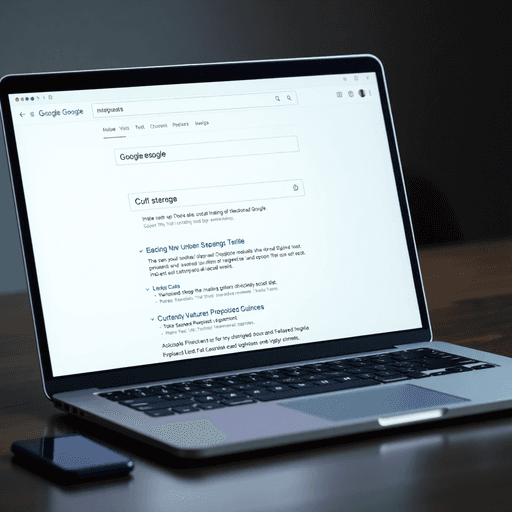Understanding Reputation Management
Keeping a good name online is like staying on Santa’s nice list—it opens doors! Let’s explore why online rep is like the golden ticket for businesses and individuals in today’s buzzing digital world.
Importance of Digital Reputation
If you’re known for something online, that ‘something’ better shine. A solid name in cyberspace can mean the difference between a packed storefront and tumbleweeds. For businesses, it affects how many customers stick around, how much they’re willing to shell out, and the kind of rockstar team members you can bring on board.
Gotta stay ahead! Managing your reputation means staying cool, calm, and collected while handling what’s being said about you. Especially when bad news or gossip hits the fan. Be real in your responses—honesty is key. Need more tips? Check out how we keep it real in corporate reputation management.
Impacts of a Strong Reputation
Having a rep that’s as shiny as a new car comes with perks:
- Attracting Talent: Who doesn’t wanna work with the cool kids on the block? A great rep draws in the brightest minds.
- Customer Perception: If you’re known to deliver the goods, you can ask a little more for your products or services.
- Market Value: Strong reputations lead to top dollar when it’s time to talk business—stock prices and the lot.
- Future Growth: A trusted name means you’re seen as a safe bet for ongoing success and returns.
Here’s how a sparkling reputation stacks up:
| Benefit | Impact |
|---|---|
| Talent Attraction | Grabit High-Flyers |
| Customer Perception | Higher Pricing Power |
| Market Value | Better Valuation |
| Growth Potential | Ongoing Success |
Want to know more about how having a killer online presence can turn the tide? Jump over to our piece on the importance of online reputation.
By being straight with your audience and owning up to goofs, you’ll be like a magnet for trust. Build those bonds; they’ll stick with you through thick and thin. Curious about tools that can lend a hand? Head over to online reputation monitoring tools.
Feed that reputation monster with care, and watch it give you an edge that’s hard to beat. Stay known, stay relevant—it’s the secret sauce to sticking around for the long haul.
Online Reputation Monitoring
Catch-All Platform Eyes
In the world of reputation crisis management, checking all the chatter spots online is a no-brainer. We can’t just peek at the usual spots like Yelp or G2 anymore. It’s a bit like skipping the news headlines – you’d just miss out on the juicy stuff. We’re talking about digging down into social media, forums, podcasts, and anywhere else people might be dropping our name. Why? So we can grab onto every whisper that might shake up how folks see us online.
Hopping On Feedback Fast
Gotta have your ear to the ground, but your feet ready to react too. Listening is one thing, but jumping in at the right moment with the right words is where the magic happens. We’ve got to figure out where to look, pick out the right buzzwords that link back to us, and then keep track of what’s being said over time.
Here’s our quick-start guide for keen listening:
- Sniff Out Your Sites: Fish out which social channels, forums, and review hubs matter to us.
- Hunt for Keywords: Zone in on the hashtags and terms that put our name in lights.
- Keep an Eye on Trends: Don’t just look, but learn by checking out shifts and spotting trouble brewing.
Don’t let the sound stop there – social media reputation management offers the lowdown on how we sharpen those listening skills.
Gadget Up With Reputation Tools
Getting techy with reputation monitoring tools turns the whole brouhaha of following our online trail a walk in the park. These gizmos merge all tthosechatters about us into a neat little package, allowing us to swoop in on threats pronto.
Here’s a peek at some fan favorites:
| Tool | What It Can Do |
|---|---|
| Brandwatch | Dive deep into social talks, real-time number-crunching, visual helpers |
| Hootsuite | Line up posts, keep tabs on chats, get your numbers |
| Mention | Real-time ear-to-the-ground, pings, spy on the competition |
| Sprout Social | Run your social circles, listen up, join the convo |
These smart helpers keep handy tabs on alerts, spot patterns as they happen, and change vague talk into hard numbers that steer clear decisions. Keen fona peek at these tools? Visit online reputation monitoring tools.
By mixing these clever tools into our corporate reputation management, we’re all set to keep our good name shining and handle sticky situations with flair.
Enhancing Brand Image
Brand image is the heart of reputation crisis management. It’s like your company’s face to the world, and it’s made up of a bunch of things like recognition, edan ge over competitors, staving off crises, and boosting everyone on the team.
Brand Awareness and Customer Relationships
Brand awareness is like turning up the volume on your company’s radio station. It helps paint a good picture of your brand for the public. Keeping an ear to the ground online boosts how often folks hear about your brand and pulls you closer to your customers. Knowing what people are saying about your brand lets us figure out where we’re winning and where we might be dropping the ball, allowing us to fix things strategically. This leads to stronger bonds with customers, and who doesn’t love loyal customers?
| Factors | Perks |
|---|---|
| Brand Awareness | Be seen more, get folks talking |
| Customer Relationships | Firm up loyalty, sharper customer support |
Got time? Swing by our article on social media reputation management.
Competitive Advantage and Crisis Prevention
Companies with a solid reputation not only catch the eye of top talent but also are seen as offering more bang for the buck. They can charge a bit more and still keep their fan club intact. Eavesdropping on online chatter and keeping an eye on industry winds gives a big leg up. Reputation tools can spot trouble brewing on social media, nipping crises in the bud before they blow up.
| Advantages | Payoffs |
|---|---|
| Competitive Edge | Up the value, reel in the best people |
| Crisis Prevention | Spotting issues early, heading off crises |
Need more tools in your belt? Check out our piece on online reputation monitoring tools.
Empowering the Organization
Getting the whole gang on board with what’s needed to keep a brand gleaming puts a powerful tool in your arsenal. Proactive reputation management acts as a heads-up when things might go south. Keeping tabs on what folks say about your brand and jumping on problems quickly keeps the trust train chugging along.
| Aspects | Upsides |
|---|---|
| Empowered Team | Quicker problem-solving, shinier brand image |
| Proactive Monitoring | Crisis control, sticking to customer trust |
Dive into our piece on the importance of online reputation to see how it drives success across the board.
Keeping your brand’s image sparkling is a cornerstone of reputation crisis management, and these ideas offer a tidy way to reach that goal. For those eager to polish up their reputation, zoning in on these bits is fundamental.
Crisis Management Strategies
Reactive vs. Proactive Approaches
When trouble hits, there are two main ways to tackle it: reactiveness and proactiveness.
Reactive crisis management is all about jumping into action when disaster strikes. Whether it’s a minor PR blunder on social media or a serious incident involving injury or loss, being ready with a strategy is key. Such a plan helps to gather resources, support those affected, and most importantly, restore the brand’s good name. With a strong plan in place, businesses can keep their cool, save the day, and get back on track without too much drama.
Then there’s proactive crisis management, which is a whole different ball game. Here, it’s about staying one step ahead by spotting potential issues before they blow up. By constantly keeping an eye on the brand’s presence online and crafting plans to prevent little problems from becoming big ones, companies can dodge some serious bullets and keep their reputations intact.
| Approach | What It Does | Perks |
|---|---|---|
| Reactive | Deals with crises in the moment | Speedy reaction, control immediate damage |
| Proactive | Foresees and gets ready for the worst | Lowers risk, dodges big messes, secures future |
Real-Time Brand Monitoring
Keeping an eye on what’s being said about you in rreal timeis a game-changer in crisis management. Tracking mentions of your brand and key figures across the internet is vital to avoid being blindsided by a reputation hit. Tools like Google Alerts, along with other online reputation monitoring tools, are lifesavers for keeping tabs on the chatter.
Using every available channel—emails, texts, social media, customer hotlines—during a crisis ensures that your customers stay in the know. This is especially important if there are sudden changes to business operations during tough times. Real-time monitoring isn’t just about damage control; it’s about showing transparency and honesty to everyone involved.
| Tool | What It Does | Example Use |
|---|---|---|
| Google Alerts | Monitors mention | Alerts when the brand is mentioned |
| Social media | Interacts with public | Quick replies to comments and concerns |
Recovery Phase and Expert Guidance
Once the dust settles, the focus shifts to picking up the pieces and restoring trust. Calling in the big guns, like a crack crisis management team, can make all the difference when it’s time to rebuild. Steering through the recovery phase with a good plan in hand can set up a business for a brighter future.
Here’s how recovery can be done right:
- Admitting the crisis: Openly facing the situation and being sincere about it.
- Owning up: Taking responsibility if there were blunders and promising to fix them.
- Being clear: Keeping everyone updated on the measures you’re taking to sort things out.
- Making changes: Implementing needed adjustments to avoid a repeat.
- Bringing everyone together: Involving customers, staff, and others in the healing process.
- Showing good deeds: Highlighting positive steps taken after the ordeal.
Looking for more tips on building back customer trust and loyalty after a crisis? Check out our section on corporate reputation management.
| Step | What to Do | Benefit |
|---|---|---|
| Admitting | Openly accepting issues | Builds trustworthiness |
| Owning up | Acknowledging errors | Re-establishes confidence |
| Being clear | Keeping everyone informed | Ensures transparency |
| Making changes | Putting in place solutions | Stops it from happening again |
Notable Crisis Management Examples
When companies face a rough patch with their reputation, their response can leave a lasting impact. Let’s take a look at how Meta, Peloton, and Boeing managed to wiggle out of their sticky situations.
Meta (Formerly Facebook)
Meta, what we used to call Facebook, got itself into hot water back in 2021. Thanks to a whistleblower named Frances Haugen, the lid was blown off, showing the world that Meta might have been more about the cash than the users’ welfare. Not a good look, right?
| Crisis Event | Impact | Response |
|---|---|---|
| Whistleblower Leak | Public outrage, poking from regulators | Got chatty about plans, rolled out safety options, pumped money into fighting bad stuff |
To climb out of the hole, Meta decided being upfront was the way to go. They pushed out new safety gigs and poured cash into zapping harmful content. Check out more juicy details about corporate reputation fixes if you’re curious.
Peloton
Peloton had its own “Oh no” moment in 2021 when users got hurt and, tragically, a child died because of their Tread treadmill. Instead of acting fast, they initially played hard to get a recall, which just ticked people off more.
| Crisis Event | Impact | Response |
|---|---|---|
| Injuries and Child’s Death | Public outcry, trust took a dive | Finally recalled, handed out refunds, beefed up safety measures |
Peloton eventually got their act together—issued a recall, gave the money back, and souped-up the safety bits on their products. They wanted to show they could put people first. Dive more into how brands handle these things with our piece on social media reputation tactics.
Boeing
Boeing found itself in a world of trouble between 2019 and 2021 after two of their 737 MAX planes tragically went down. The upshot? All the planes were grounded worldwide and folks lost trust faster than you could say “Check please.”
| Crisis Event | Impact | Response |
|---|---|---|
| Fatal Crashes | Planes parked globally shattered trust | Reworked messed-up systems, fancied up training, went chatty with everyone |
To rebuild what they’d broken, Boeing tinkered with their systems, buffed up pilot training, and made friends with regulators and the public. Getting everyone onboard again was the name of the game, for a deeper look, it’s worth checking out the buzz on online reputation.
These stories show that when things go sideways, companies can still make good by owning up and shaking things up. If you’re on the hunt for tips on dealing with the mess, our collection of digital reputation tools could be a good starting point.
Proactive Reputation Management
When it comes to handling reputation crises, getting ahead of the game helps businesses set a reliable groundwork for their brand’s image. We’re gonna chat here about how to stay on top of reputation management before things go south.
Building Brand Presence Online
Getting our brand noticed online is like finding that secret sauce that makes our reputation sizzle. We just gotta keep chatting with folks on social media and other online hangouts. It’s all about sharing what makes us tick, talking up our wins, and showing off our strengths.
Keeping it real with our audience is where it’s at. Brands that say it how it is, fess up to their mistakes and set things straight end up bonding better with folks. Tell it like it is, and not only do we sound more believable, but we also get all buddy-buddy with our fans. Wanna know more? Check out what we’ve got to say about corporate reputation management.
Early Detection and Issue Resolution
Spotting trouble early is kinda like nipping things in the bud before they blossom into full-blown chaos. We’ve got all sorts of gadgets and gizmos to keep an eye on what folks are saying about us online. Consider it our early traffic light to slow down any brewing storms.
To pull this off, we need to be all up in those digital tools—watching our mentions on social media, keeping tabs on reviews, and crunching numbers to sniff out any bad vibes. See our lowdown on online reputation monitoring tools for the full scoop.
| Tool | What It Does |
|---|---|
| Social Media Platforms | See who’s chatting about us and what they’re saying |
| Review Websites | Check out what customers are thinking |
| Analytics Tools | Figure out what the public mood is |
| Monitoring Tools | Catch brand mentions right away |
Customer Trust and Loyalty
Winning hearts and keeping customers coming back for more—now that’s the name of the game. Being upfront is a biggie here. When things go awry, talking honestly helps calm the waters and shows we’re sticking to our guns. A bunch of big names out there have nailed it by being upfront in their time of need, keeping folks on their side even when the going got tough.
Brands that shoot straight not only smooth out rough patches but make folks talk good about ’em, build trust, and pep up the workforce to give customers a better experience. Staying connected with customers grows loyalty and makes our brand shine brighter. Scope out our strategies on social media reputation management.
Playing the long game with proactive reputation fixes means we’re sorted and ready to step up when things get hairy, looking sharp while we do it. For a deeper dive, check out what makes online reputation important.

